In the past two years, the decorative material "micro-cement" that embodies the new aesthetics, which it has become a popular Internet celebrity and is very popular among young owners. However, in the face of a material that is not cheap and has high construction requirements, many designers still dare not try it easily.
This time, the editor of G.SB has selected 10 issues that many designers are most concerned about with "Micro-cement", and invited experienced designers and material suppliers, from the aspects of selection, construction and maintenance. We answer all your questions in all aspects!
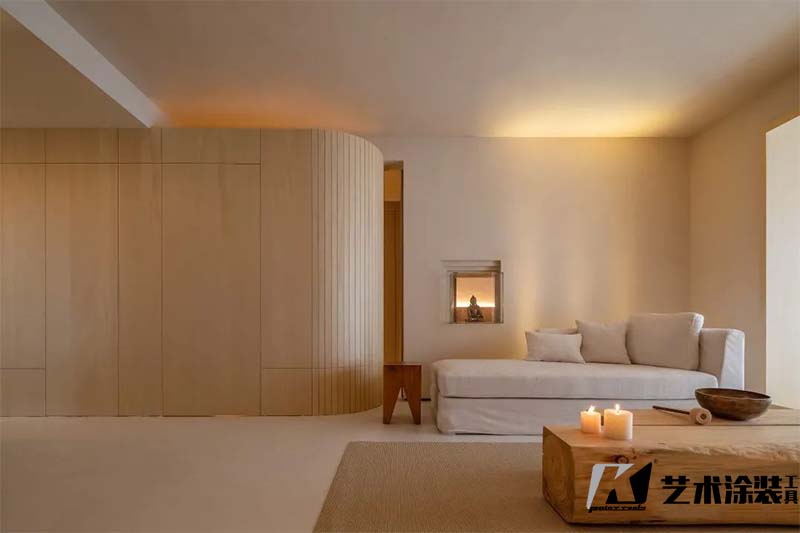
Currently in the Chinese market, the most common micro-cement brands are CimentArt from Spain, Topciment from Spain, MONTO from Spain, M&B from Italy for art paints, and DECO CIRÉ from Greece.
Designer @PAN Xiao-yang: I usually choose Spanish CimentArt or domestic Simon microcement. The former has excellent performance and the latter is more cost-effective. In the case of insufficient budget, you can choose according to the specific usage scenario.
Designer @Cloud Walk Design: I use Topciment microcement from Spain. In addition to high-quality materials, it has more professional technical support and high-quality construction services.
Designer @Kim Design: I chose Spain Topciment Microcement and Spain MONTO Microcement.
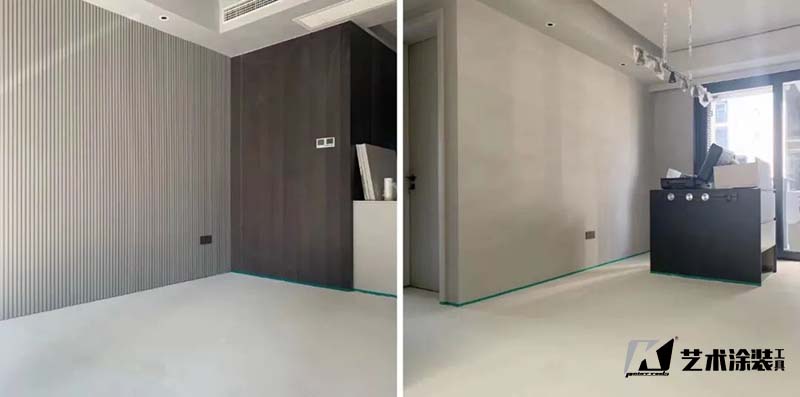
On-site effect after micro-cement construction © Kim Design
Through samples, microcement was tested for stain resistance, abrasion resistance, color consistency and flexibility.
1. To test the stain resistance, you can use an oil-based pen to write on the sample, and then use an organic solvent such as alcohol to wipe it to observe the residual traces and penetration of the stain;
2. To test the wear resistance, you can use one kilogram of pressure to press on one square centimeter, rub it back and forth ten times, and observe the wear marks of the sample;
3. Test the color consistency, which can be compared by different batches of samples;
4. To test the flexibility, you can scrape the microcement on the plastic card or paper, and then bend the card or paper after drying to observe whether there is cracking or peeling.
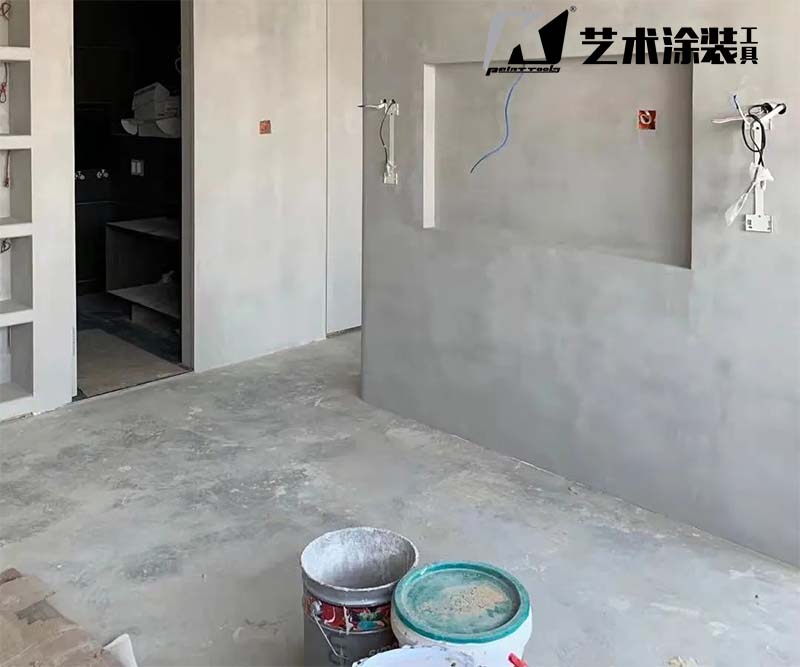
Construction site. Image © Xiaoyang Pan
The color stability, calmness and spatial expression of good microcement products can be experienced firsthand. Micro-cement is a cement product. First, you can check the specific product content to ensure the support of the product's stable performance. Secondly, experience the texture of the cement and the expression of the material. Thirdly, observe the purity of the material to verify the ductility of the material.
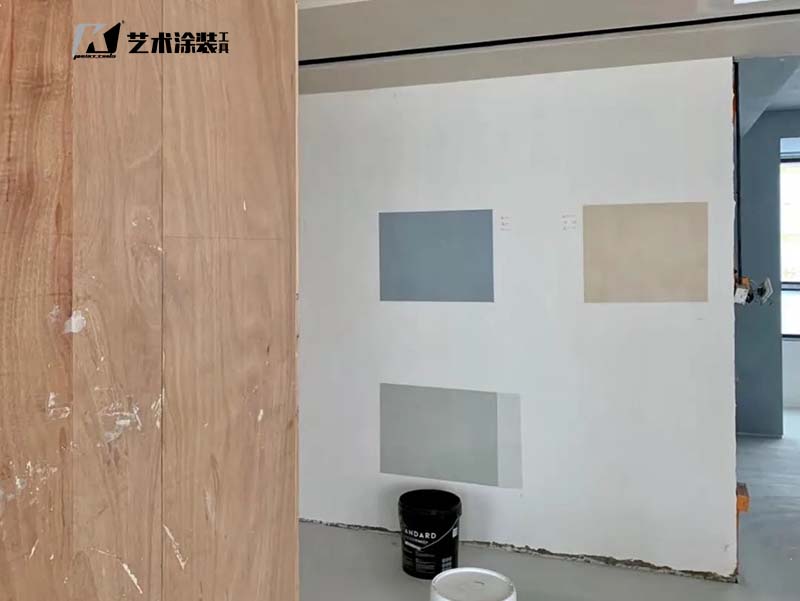
Construction site. Image © Yunxing Design
Designer @FFstudio: The color and texture of the material are closely related to the space presentation, so you need to carefully observe the samples and figure out the expected effects.
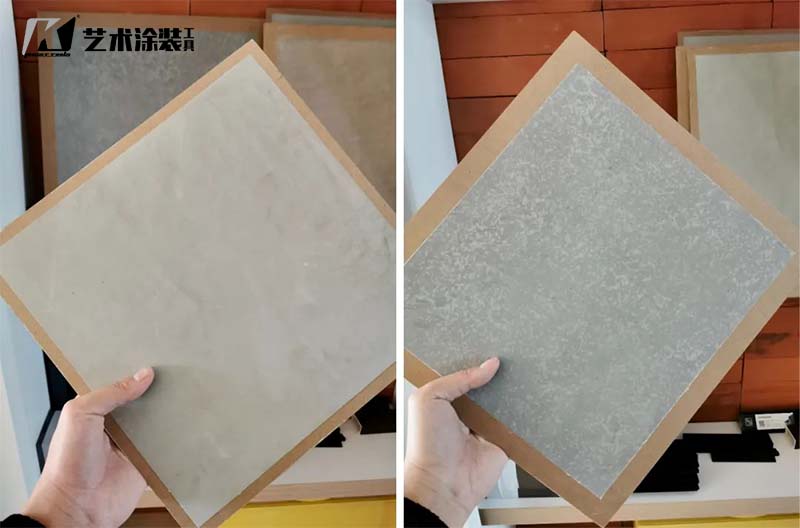
Sample selection © FFstudio
@Zhai-Jiang:If conditions allow, you can visit the exhibition hall of the microcement brand in person, and you can intuitively understand the real situation of the material after long-term use.
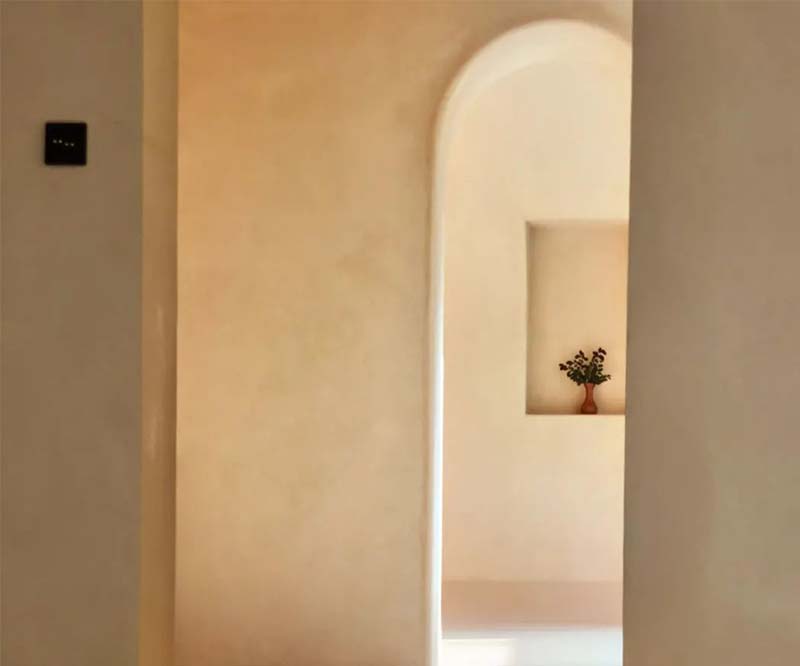
Zhaijiang Shanghai Studio. Image © Zhaijiang
Designer @Kim Design: The microcement material itself does not crack, but if the cracking strength of the base layer is too high, which exceeds the flexural resistance of the microcement, it will inevitably be pulled. Therefore, grass-roots construction is the top priority to ensure the final effect.
Designer @PAN Xiaoyang: Although the toughness of microcement is good, it will also crack when the base layer is severely cracked. In the construction of the ground, it is recommended to lay the steel mesh first, and then backfill the base cement; in the construction of the wall, the base putty should be scraped well, and after grinding and smoothing, the cracks at the edge gaps or the joints of different materials should be treated to prevent cracking , and then batch microcement.
Some microcements are waterproof throughout, and have strong water resistance even without a cover. However, some micro-cement has poor water resistance and needs to rely on the finishing agent to achieve high-strength waterproofing. Therefore, once the cover is damaged or cracks occur, water will seep. It is necessary to select suitable products and pay attention to the use of materials.
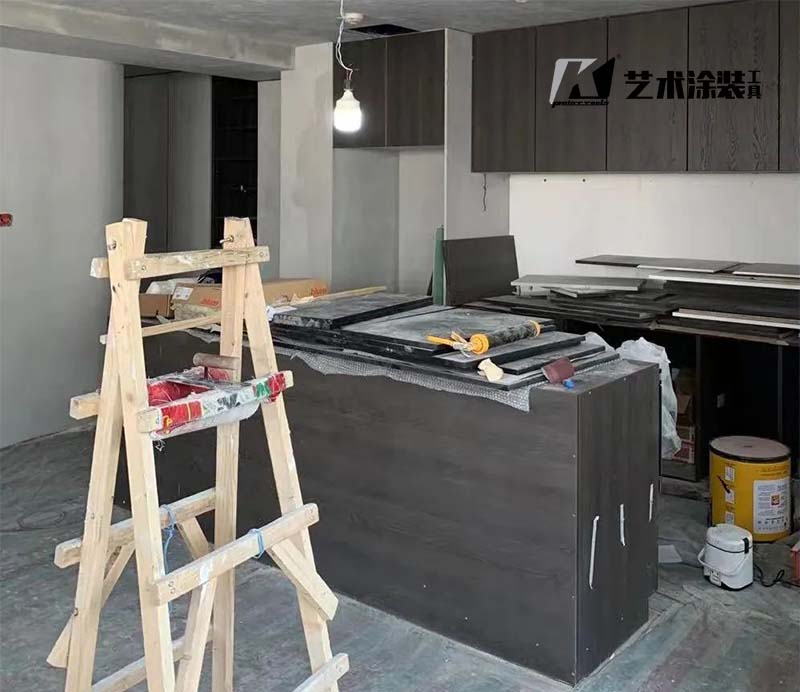
Construction site. Image © Xiaoyang Pan
In addition to the conventional living room and bedroom walls and floors, it is also suitable for kitchens and bathrooms. Micro-cement can replace ceramic tiles and marble, making it seamless and waterproof at the same time. If you are worried that the water in the wet area will damage the material when the toilet is in use, you can strengthen the protective treatment locally. If it is used in the kitchen and other places with high frequency of daily use, the use of strong corrosive cleaning products such as alcohol and 84 disinfectant should be avoided. Depending on the usage, the protection can be strengthened after a certain period of use.
Designer @NOTHINGDESIGN-Liu Chang: Micro-cement is very suitable for the renovation of hardcover rooms and can be directly attached to the surface of the tiles to present a better visual effect. In addition to the bathroom, I also use micro-cement for the painting and renovation of kitchen countertops and sinks. The base is generally stone, which has a waterproof effect. Brushing micro-cement on it can ensure the unity of indoor style while waterproofing.
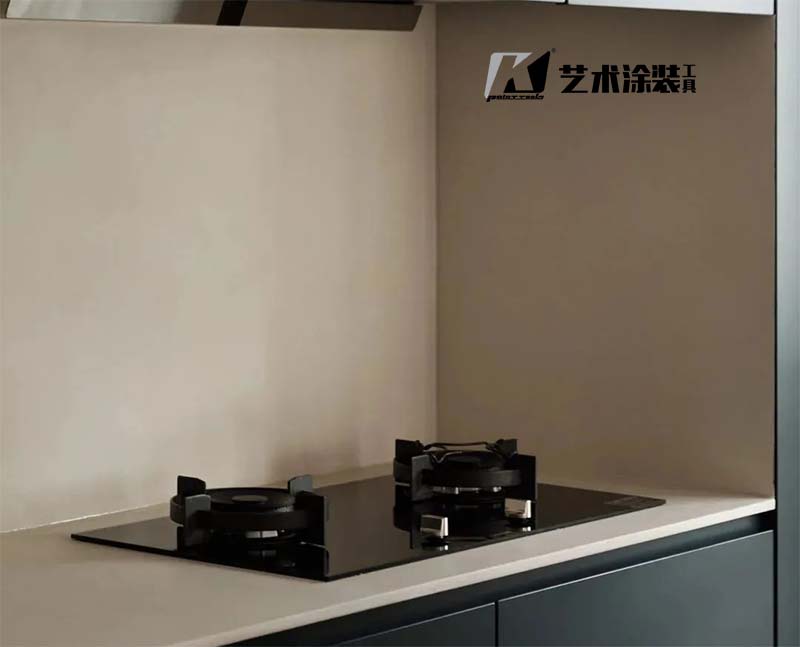
@NOTHINGDESIGN-Liu Chang's work
The countertop and side and back of the cabinet are custom-made with stone base, and the surface is painted with Mi-Nite micro-cement.
Designer @NOTHINGDESIGN-Liu Chang: The selection is mainly based on the client's budget and needs. Generally, the micro-cement construction team of the brand side is selected, and the operation is skilled, which can ensure the effect of the finished product, and at the same time has a relatively complete after-sales guarantee. If the budget is not high, I will buy the raw materials myself and use my own construction team to do it.
Designer @Cloud Walk Design: The construction of micro-cement is very difficult, the process is more complicated, the materials used are more, and there are strict ratio requirements. Therefore, we choose to directly carry out the construction by the professional masters of the brand side. The construction level of different masters is also different, which requires more patient color selection and technique requirements.
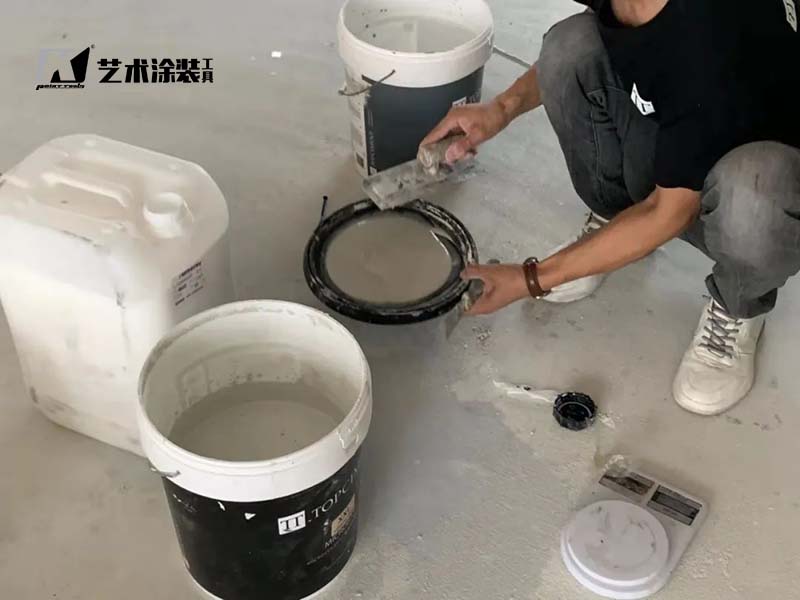
Construction site. Image © Yunxing Design
@Zhai-Jiang:Microcement can be used for floor heating, its thickness is thinner than that of tiles or floors, and the loss of temperature will be smaller. For the base layer with floor heating, whether it is cement mortar or self-leveling, the base layer must be fully dried. Before making micro-cement, the temperature of the floor heating can be gradually increased to help the evaporation of the water vapor on the base layer and the drying time of the base layer on the ground. Depends on a variety of factors and needs to be judged on a case-by-case basis. Note that the floor heating cannot be turned on when making micro-cement.
Designer @Cloud Walk Design: Most of the local cases in Nanjing use floor heating, so they have higher requirements for crack resistance. According to experience, to make micro-cement on floor heating, compared with cement leveling, we recommend tiling first, and the final construction effect will be very good. It is also a good choice to use finely decorated stone or tile floors.
When choosing ceramic tiles as the base, there are the following precautions: first, the tiles should be aligned and leveled to avoid height differences; second, appropriate materials should be used to fill the tile joints; third, in a relatively humid environment, it should be do moisture-proof treatment at the gaps of the tiles to prevent moisture from passing through the gaps of the tiles and lift the surface material up.
When selecting materials, the feasibility of the process should be connected first. In the hydropower stage, it is necessary to meet the requirements of the site, the reserved size of the nodes and the over-retention of the corresponding materials. Among them, the process connection and protection are the key points.
The micro-cement construction process should be as late as possible. For example, after the main body is installed, the friction and friction should be reduced. If it is difficult to repair large pits, timely protection is required.
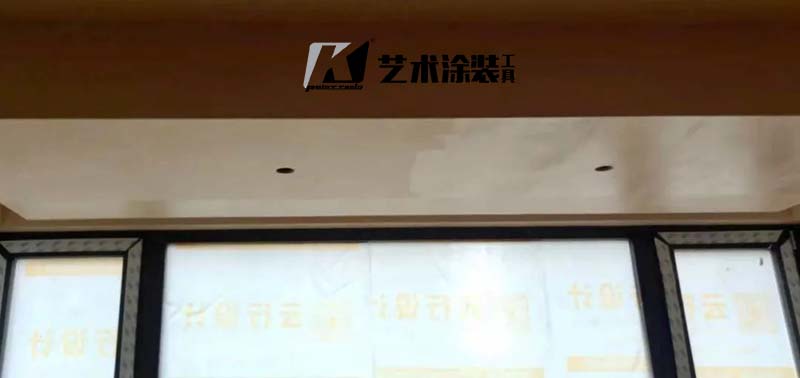
Different finishes have different gloss levels. Image © Yunxing Design
The characteristics of the material itself also need to be designed, such as the details of the closing. Micro-cement itself has the characteristics of grainy texture. We will do concave treatment at the inner corners, such as indented skirtings or inner corners, etc. Of course, roughness is another expression.
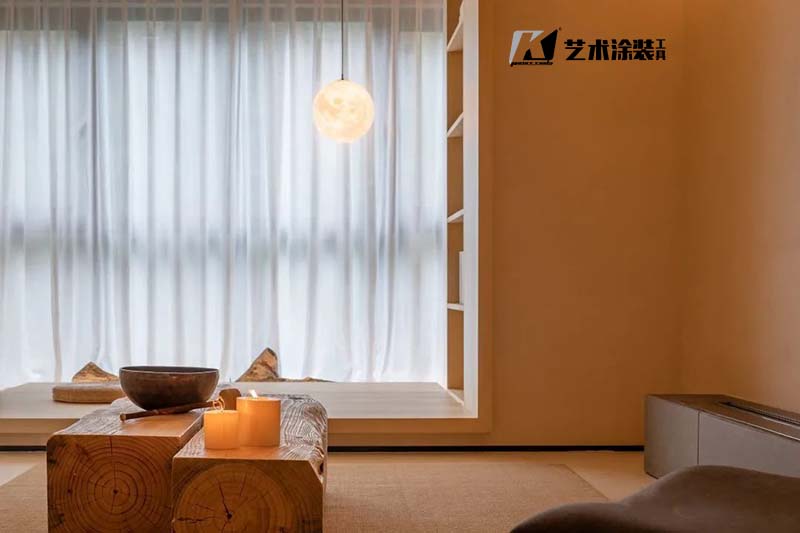
The material expression also needs to be combined with the processing of lighting. The micro-cement case designed by Yunxing uses most of the indirect light forms in the choice of lighting for material performance. Under the diffuse light, it can highlight the simple texture characteristics of the micro-cement itself.
@Zhai-Jia: Before moving in, you can use felt to wrap the sharp parts of the furniture in contact with the ground, such as thinner stool legs and table legs, to avoid indentation. In daily cleaning, just use neutral detergent, avoid using corrosive detergent. Rinse and scrub with absorbent cleaning items such as mops or nano sponges, and dispose of accumulated water in time.
Designer @PAN Xiaoyang: The organic solvent will react with the resin in the microcement. Although it has a good cleaning effect, it will cause irreversible damage to the material. If there are serious stains, it is recommended to use a paper towel or cotton swab dipped in a small amount of organic solvent, such as alcohol, banana water, etc., and gently wipe the stained surface, remember not to wipe it in a large area.
Designer @Kim Design: The care of microcement is similar to natural wood floors, and the surface should be kept free of stones or grit, to avoid heavy objects colliding or dragging heavy objects. It can be regularly maintained with a special curing agent, or the surface finish can be maintained in the form of waxing. Generally, home improvement can be done once every one to two years. You can do it yourself or ask someone to do it.
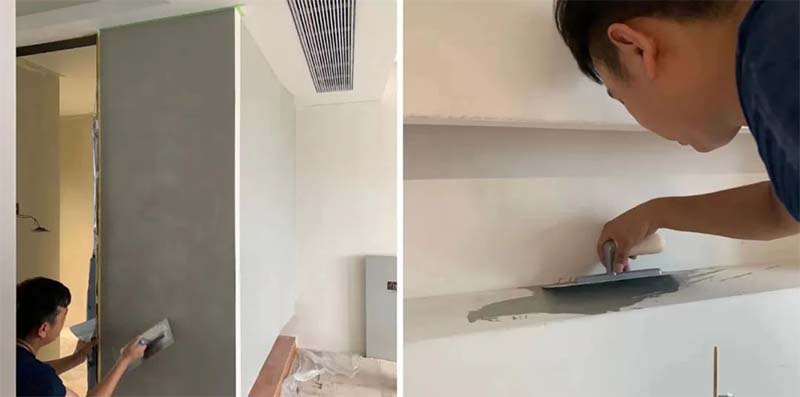
Construction site © Kim Design
@Zhai-Jiang: We will leave a small bucket of micro-cement material for the customer as a spare after the completion of the construction. When a bump needs to be repaired, use spare materials for small-scale repairs, and the color difference is relatively small. In the event of severe cracking, extensive repair or redoing is required.
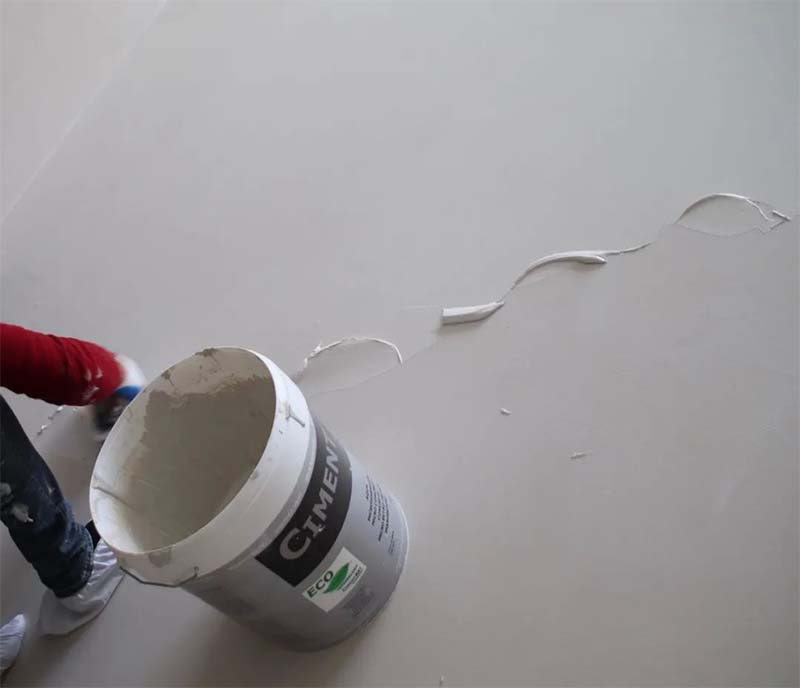
Construction site. Image © Zhai Jiang
Microcement is a surface decoration material that can realize the effect of surface integration. The main components are cement, water-based resin, modified polymer, quartz, etc. It can be used in any flat place such as wall, floor, top and cabinet. , for a seamless, one-piece effect.
Traditional micro-cement is usually a two-component material, generally in the ratio of A+B group, which requires construction personnel to blend materials on site. With the update and development of materials, a new type of single-component material micro-cement has also appeared on the market, which can be used immediately without blending.
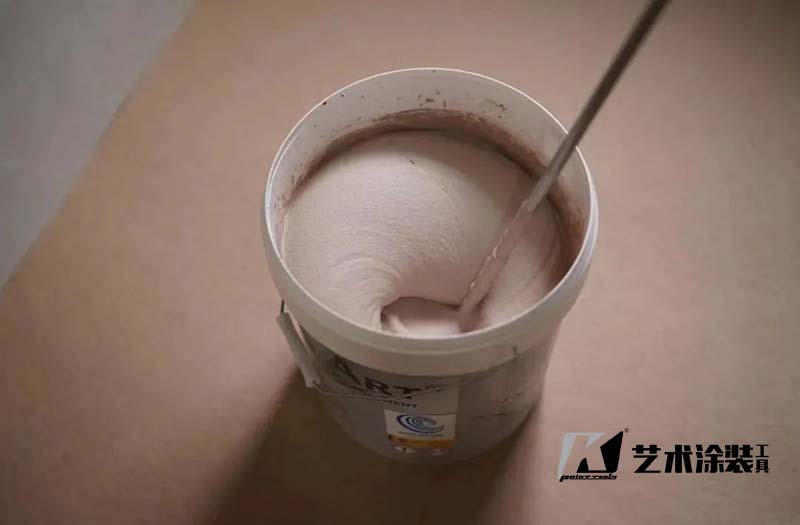
The construction process of micro-cement generally requires 5-9 steps. The construction requirements of different brands of micro-cement are slightly different. Usually, the following three steps must be included: interface agent, micro-cement and protective agent. According to different basic conditions, other processes will be added.
① Clean the wall, prepare the interface agent and glass fiber mesh cloth, and start brushing the interface agent.
② After the interface agent dries, start to brush the microcement for the first time, and use professional techniques to scrape the thickness of 0.5mm.
③ After the micro-cement is dry, perform the first grinding.
④ Repeat steps 2 and 3 once, brushing and polishing twice in total.
⑤ After cleaning, use the sealant to brush the sealing layer on the microcement.
⑥ After the sealing layer is dry, brush the protective layer for the first time.
⑦ After drying again, brush the protective layer a second time.
① Clean the ground, lay a layer of glass fiber mesh on the ground, and start to apply the interface agent.
② After the interface agent is dry, start to brush the microcement for the first time, and use professional techniques to scrape the thickness of 0.5mm.
③ After the micro-cement is dry, perform the first grinding.
④ Repeat steps 2 and 3 three times for a total of four times of brushing and grinding.
⑤ After cleaning, use the sealant to brush the sealing layer on the microcement.
⑥ After the sealing layer is dry, brush the protective layer for the first time.
⑦ After drying again, brush the protective layer a second time.
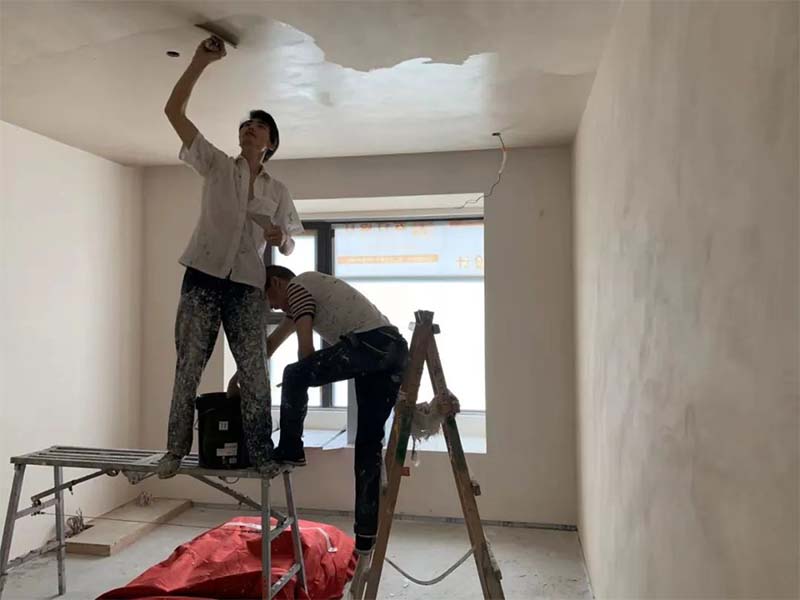
The tool used is generally a knife, and the better the tool, the better the final effect.
① Micro-cement has high requirements on the flatness of the base layer. It is necessary to confirm the stability and level of the base layer before the formal painting, and do a good job of leveling and patching.
② Be sure to avoid cross construction. Before the formal construction, it is necessary to protect the site to avoid dust.
③ After the construction is completed, a maintenance period is required. Under normal circumstances (depending on the weather and temperature), the wall construction can be used normally within 3 days. Only 7 days after the completion of the ground construction, people can enter the site. If people enter the site for subsequent construction, ground protection is required.
④ Pay attention to the construction management, and it is necessary to have a clear plan for the overall construction in the design stage to prevent the wrong handover with other materials and affect the final effect.
Materials are tools for design expression. As a popular fried chicken in the material industry nowadays, whether or not to use "micro cement" and how to use it, every link must be carefully considered.
Before selecting "micro-cement", the owner's budget should be fully considered. At the same time, in the case that workers are generally not familiar with micro-cement construction, it is best to choose a brand owner or an experienced construction team to avoid risks for the owner - strictly control every link from selection to construction, and balance between "effect" and "risk", which is the professional quality of professional designers.
Microcement is a decorative coating that has become popular for its extensive use as continuous flooring in private homes as well as in large venues and shops. Its versatility in finishes, colors and textures, along with its functionality and competitive pricing, are some of the factors that have contributed to the boom this paint has been experiencing for a while.
Not just limited to floors, as the use of micro-cement walls has skyrocketed in recent years in both indoor and outdoor spaces. The fact that microcement on walls is very popular is due to its elegant aesthetics, durability, ease of cleaning and maintenance, and the absence of expensive renovations, among many other qualities.
Undoubtedly, the great added value of using microcement on walls is to escape from the most chaotic part of a conventional renovation: the rubble involved in building work. A factor that inevitably forces the home or premises to be renovated to remain unused for a certain period of time.
The fact that microcement on walls has become a trend in decoration and design, especially in interiors, is no coincidence. In fact, microcement is one of the best wall coverings on the market for many reasons.
Whether you decide to use microcement for the walls of a particular room or a whole, you will obtain a long-lasting aesthetic result without unnecessary complex work. Whatever style you want to give your space, microcement walls are the perfect solution.
A handicap that disappears completely when microcement is applied to walls. Thanks to its thickness of just 3 mm and its compatibility with all types of materials (marble, tiles, stoneware, ceramic, terrazzo, tiles, etc.), it is laid directly on the substrate without having to remove the existing material.
Microcement is a material whose properties are not damaged by exposure to sunlight. This resistance to UV rays, as well as to changes in temperature and humidity, has
Previous: None.
Next: None.
Copyright:@2020-2021
Comments Please sign in or sign up to post.
0
0 of 500 characters used